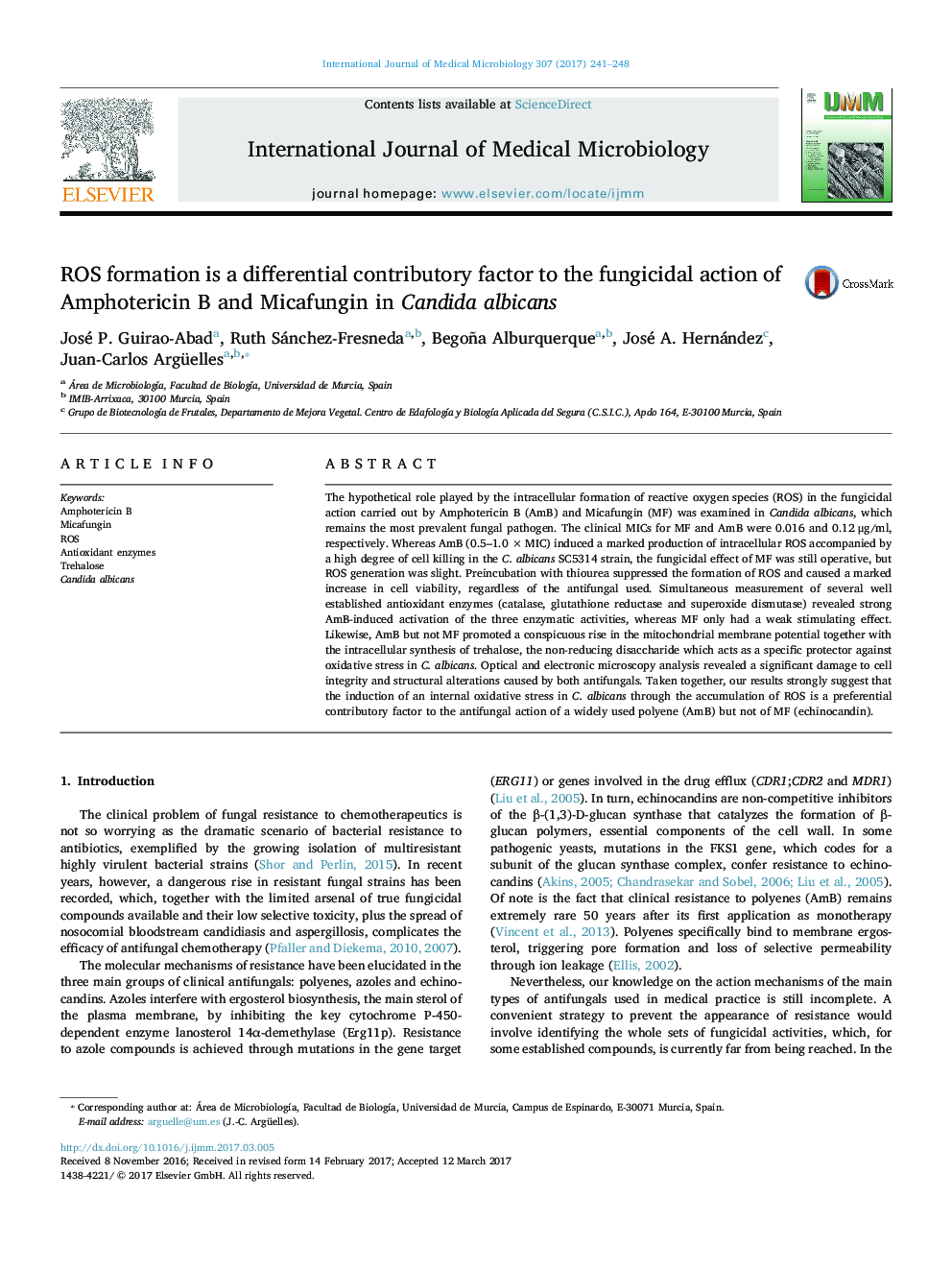| Article ID | Journal | Published Year | Pages | File Type |
|---|---|---|---|---|
| 5517789 | International Journal of Medical Microbiology | 2017 | 8 Pages |
â¢Our knowledge of the whole fungicidal mechanisms evolved by clinical compounds is incomplete.â¢The intracellular formation of ROS is a contributory factor to antifungal effects in pathogenic yeasts.â¢Suppression of oxidative stress increased the cell resistance to antifungals in Candida albicans.â¢Amphotericin B but not Micafungin induced the activation of antioxidant enzymatic activities and trehalose accumulation.
The hypothetical role played by the intracellular formation of reactive oxygen species (ROS) in the fungicidal action carried out by Amphotericin B (AmB) and Micafungin (MF) was examined in Candida albicans, which remains the most prevalent fungal pathogen. The clinical MICs for MF and AmB were 0.016 and 0.12 μg/ml, respectively. Whereas AmB (0.5-1.0 Ã MIC) induced a marked production of intracellular ROS accompanied by a high degree of cell killing in the C. albicans SC5314 strain, the fungicidal effect of MF was still operative, but ROS generation was slight. Preincubation with thiourea suppressed the formation of ROS and caused a marked increase in cell viability, regardless of the antifungal used. Simultaneous measurement of several well established antioxidant enzymes (catalase, glutathione reductase and superoxide dismutase) revealed strong AmB-induced activation of the three enzymatic activities, whereas MF only had a weak stimulating effect. Likewise, AmB but not MF promoted a conspicuous rise in the mitochondrial membrane potential together with the intracellular synthesis of trehalose, the non-reducing disaccharide which acts as a specific protector against oxidative stress in C. albicans. Optical and electronic microscopy analysis revealed a significant damage to cell integrity and structural alterations caused by both antifungals. Taken together, our results strongly suggest that the induction of an internal oxidative stress in C. albicans through the accumulation of ROS is a preferential contributory factor to the antifungal action of a widely used polyene (AmB) but not of MF (echinocandin).
